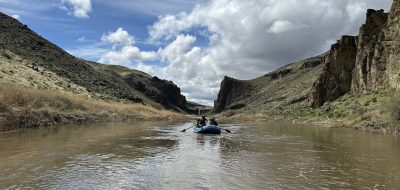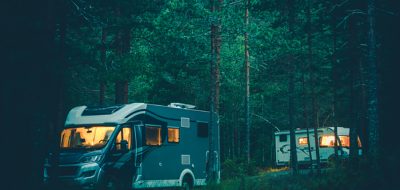By Bob Difley
 In last week’s post, Introduction to Boondocking for the curious, the closet adventurer, even the skeptic, I urged those who have not yet tried boondocking to get off the grid and give it a shot. So let’s look at exactly what boondocking entails, clear up a few gray areas, and see how to ease into it with a minimal of drama and trauma.
In last week’s post, Introduction to Boondocking for the curious, the closet adventurer, even the skeptic, I urged those who have not yet tried boondocking to get off the grid and give it a shot. So let’s look at exactly what boondocking entails, clear up a few gray areas, and see how to ease into it with a minimal of drama and trauma.
To make boondocking enjoyable and fun–not even counting all the campground fees you will save–requires a combination of learned (and practiced) skills, adjusting to new habits, a desire to stay out in the wilderness as comfortably as possible, and to possess a curiosity about out-of-the-way places, nature, wildlife, and what you might find around the next bend.
Not all boondockers match this profile. Some of the differences can be attributed to the semantics of the words “boondocking” and “dry-camping.” They are the same in that both refer to camping without any hook-ups–water, electricity, or sewage. With even one of these appendages, we would have partial hook-ups and therefor not technically boondocking. Let’s call it almost-boondocking. The key–or difference–is in where we do it.
Dry-camping is what you do at an RV rally, in a Wal-mart parking lot, highway rest stop, or a primitive campground where there are no hook-ups but could have a fresh water supply, trash cans, or dump station on site.
True boondocking is camping away from civilization, out in the boonies, where no camping amenities exist. The word “boondock” comes from the Tagalog “bundok” meaning “mountain.” Answers.com gives the definition “rural country; the backwoods”. A reader suggests that the word boondocking has become synonymous with dry-camping and there should be a new term “wilderness camping” for camping in the boonies. Good idea but it hasn’t caught on yet.
Whatever you want to call camping without hookups, where you do it and why is the driving force for practicing boondocking skills. For instance if your style is “blacktop boondocking” in Walmart and Cracker Barrel parking lots, you will have little need to perfect skills and change old habits in order to stretch your stay for an extra two or three days. Every modern RV has enough house battery power, fresh water storage, and waste storage tanks to camp without hook-ups for a night or two.
Fortunately, you can break the bond to hookups by starting with trying a night or two blacktop boondocking and graduate through myriad steps to as far as you want to take it.
Somewhere in the middle you will find the perfect fit for your style of boondocking. And that will be determined by your likes and dislikes–whether you like to be on the go and only spend one or two nights at a time in any location (then refill, dump, etc. before arriving at your next boondocking campsite), or you like to venture beyond the interstates, maybe even beyond even paved two-lane roads, staying in one location long enough to explore the area.
Each step you move beyond blacktop boondocking requires new or improved skills and tips to make it enjoyable. And that’s where we’re going to next week–what you need to know about one-night blacktop boondocking and progressing through rallies, primitive campgrounds, dispersed camping areas, and beyond. But if you want the expanded version, try one or more of my ebooks (links are below). Thanks.
For more RVing articles and tips take a look at my Healthy RV Lifestyle website, where you will also find my ebooks: BOONDOCKING: Finding the Perfect Campsite on America’s Public Lands (PDF or Kindle), 111 Ways to Get the Biggest Bang for your RV Lifestyle Buck (PDF or Kindle), and Snowbird Guide to Boondocking in the Southwestern Deserts (PDF or Kindle), and my newest, The RV Lifestyle: Reflections of Life on the Road (PDF or Kindle reader version). NOTE: Use the Kindle version to read on iPad and iPhone or any device that has the free Kindle reader app.






